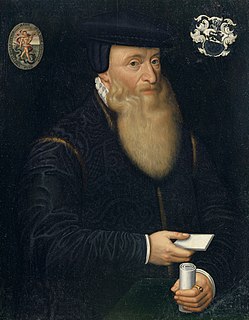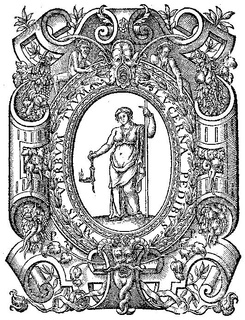
Rhetoric is the art of persuasion, which along with grammar and logic, is one of the three ancient arts of discourse. Rhetoric aims to study the techniques writers or speakers utilize to inform, persuade, or motivate particular audiences in specific situations.Taking place in Athens in the early fifth century, the demos "the people" created "a strategy for effectively talking to other people in juries, forums, and the senate". Aristotle defines rhetoric as "the faculty of observing in any given case the available means of persuasion" and since mastery of the art was necessary for victory in a case at law, for passage of proposals in the assembly, or for fame as a speaker in civic ceremonies; he calls it "a combination of the science of logic and of the ethical branch of politics". Rhetoric typically provides heuristics for understanding, discovering, and developing arguments for particular situations, such as Aristotle's three persuasive audience appeals: logos, pathos, and ethos. The five canons of rhetoric or phases of developing a persuasive speech were first codified in classical Rome: invention, arrangement, style, memory, and delivery.

Theodor Zwinger the Elder was a Swiss physician and Renaissance humanist scholar. He made significant contributions to the emerging genres of reference and travel literature. He was the first distinguished representative of a prominent Basel academic family.
Genre is any form or type of communication in any mode with socially-agreed-upon conventions developed over time. In popular usage, it normally describes a category of literature, music, or other forms of art or entertainment, whether written or spoken, audio or visual, based on some set of stylistic criteria, yet genres can be aesthetic, rhetorical, communicative, or functional. Genres form by conventions that change over time as cultures invent new genres and discontinue the use of old ones. Often, works fit into multiple genres by way of borrowing and recombining these conventions. Stand-alone texts, works, or pieces of communication may have individual styles, but genres are amalgams of these texts based on agreed-upon or socially inferred conventions. Some genres may have rigid, strictly adhered-to guidelines, while others may show great flexibility.

Literary criticism is the study, evaluation, and interpretation of literature. Modern literary criticism is often influenced by literary theory, which is the philosophical discussion of literature's goals and methods. Though the two activities are closely related, literary critics are not always, and have not always been, theorists.
Greek literature dates back from the ancient Greek literature, beginning in 800 BC, to the modern Greek literature of today.

Tragedy is a genre of drama based on human suffering and, mainly, the terrible or sorrowful events that befall a main character. Traditionally, the intention of tragedy is to invoke an accompanying catharsis, or a "pain [that] awakens pleasure", for the audience. While many cultures have developed forms that provoke this paradoxical response, the term tragedy often refers to a specific tradition of drama that has played a unique and important role historically in the self-definition of Western civilization. That tradition has been multiple and discontinuous, yet the term has often been used to invoke a powerful effect of cultural identity and historical continuity—"the Greeks and the Elizabethans, in one cultural form; Hellenes and Christians, in a common activity," as Raymond Williams puts it.

Jean Bodin was a French jurist and political philosopher, member of the Parlement of Paris and professor of law in Toulouse. He is best known for his theory of sovereignty; he was also an influential writer on demonology.

Franciscus Patricius was a philosopher and scientist from the Republic of Venice, originating from Cres. He was known as a defender of Platonism and an opponent of Aristotelianism.

A literary genre is a category of literary composition. Genres may be determined by literary technique, tone, content, or even length. They generally move from more abstract, encompassing classes, which are then further sub-divided into more concrete distinctions. The distinctions between genres and categories are flexible and loosely defined, and even the rules designating genres change over time and are fairly unstable.

The designation "Renaissance philosophy" is used by scholars of intellectual history to refer to the thought of the period running in Europe roughly between 1355 and 1650. It therefore overlaps both with late medieval philosophy, which in the fourteenth and fifteenth centuries was influenced by notable figures such as Albert the Great, Thomas Aquinas, William of Ockham, and Marsilius of Padua, and early modern philosophy, which conventionally starts with René Descartes and his publication of the Discourse on Method in 1637.

Christian humanism regards humanist principles like universal human dignity, individual freedom, and the importance of happiness as essential and principal or even exclusive components of the teachings of Jesus. Proponents of the term trace the concept to the Renaissance or patristic period, linking their beliefs to the scholarly movement also called 'humanism'.

Johannes Oporinus was a humanist printer in Basel.

The Education of a Christian Prince is a Renaissance "how-to" book for princes, by Desiderius Erasmus, which advises the reader on how to be a good Christian prince. The book was dedicated to Prince Charles, who later became Habsburg Emperor Charles V. Erasmus wrote the book in 1516, the same year that Thomas More finished his Utopia and three years after Machiavelli had written his advice book for rulers Il Principe. The Principe, however, was not published until 1532, 16 years later.

Francesco Robortello was a Renaissance humanist, nicknamed Canis grammaticus for his confrontational and demanding manner.

Bibliotheca selecta is a bibliographical encyclopedia by the Jesuit Antonio Possevino, printed in two folio volumes at the Typographia Apostolica Vaticana by Domenico Basa in 1593. It represents an authoritative and up-to-date Jesuit compendium of Counter-Reformation knowledge.

Pietro Perna was an Italian printer, the leading printer of Late Renaissance Basel, the Erasmian crossroads between Italian Renaissance humanism and the Protestant Reformation. His books promoted the Italian heretical thinkers at the origins of Socinianism and the theory of Tolerance. He was a major publisher of Protestant historians like Flacius Illyricus and David Chytraeus and promoted the ars historica treatises of the period, notably the 18 authores de historia in Artis Historicae Penus (1579).

An Apology for Poetry is a work of literary criticism by Elizabethan poet Philip Sidney. It was written in approximately 1580 and first published in 1595, after his death.

Artis Historicae Penus is a compilation of 18 ars historica works brought out in 1579 by the late Renaissance Basel printer Pietro Perna. This compendium in octavo appeared in 2 volumes with a copious index. A third volume adds the final work by Antonio Riccoboni, often missing in library collections as a separate edition. Three years earlier, in 1576, Perna brought out a single volume in the same format that ran to 1140 pages and featured the central work of Jean Bodin in its title, along with twelve other authors. Perna writes a letter to the lover of histories. Editor Johann Wolf dedicates the second collection to Frederick I of Wurttemberg. He states that he has included all the princely dedications and prefaces of the single works from the source editions for the sake of completeness.
Apparatus ad omnium gentium historiam (1597)

Celio Secondo Curione was an Italian humanist, grammarian, editor and historian, who exercised a considerable influence upon the Italian Reformation. A teacher in Humanities, university professor and preceptor to the nobility, he had a lively and colourful career, moving frequently between states to avoid denunciation and imprisonment: he was successively at Turin, Milan, Pavia, Venice and Lucca, before becoming a religious exile in Switzerland, first at Lausanne and finally at Basel, where he settled. He was famous and admired as a publisher and editor of works of theology and history, also for his own writings and teachings, and for the wide sphere of his friendships and correspondence with many of the most interesting reformists, protestants and heretics of his time, though his energetic influence was at times disruptive. The imputation of antitrinitarianism is very doubtful. Curio published under the Latin form of his name, but scholarship has adopted the Italian form.
















